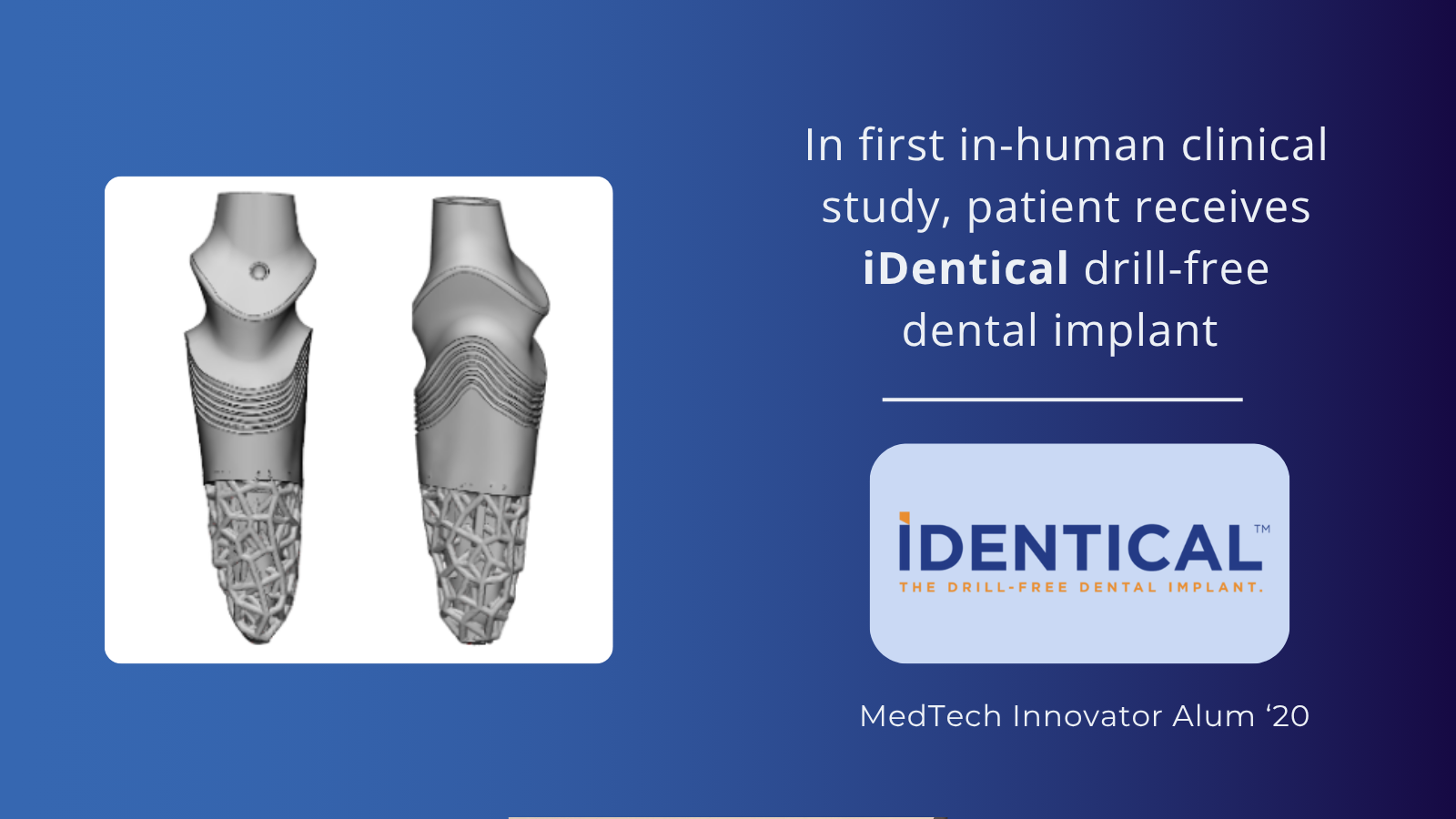In first in-human clinical study, patient receives iDentical drill-free dental implant
Patient Stories: How MedTech Innovator alumni are transforming lives
At MedTech Innovator, we empower healthtech companies to bring groundbreaking solutions to patients in need. Our Patient Stories series highlights the real-world clinical impact of the companies we support—showcasing how their technologies are transforming patient care, improving outcomes, and advancing healthcare.
First-in-Human Study Marks Major Milestone for iDentical Drill-Free Dental Implant
Dental implant procedures have long been associated with high invasiveness, extended recovery times, and significant financial costs. Traditionally, placing a dental implant requires drilling into native bone, a complex surgical process that poses risks such as nerve damage, infection, and long healing periods. For many patients, the fear and anxiety surrounding this surgery become a barrier to receiving care.
But a new chapter in dental medicine has just begun.
In a groundbreaking first-in-human clinical study, a patient received an iDentical drill-free dental implant, a revolutionary treatment that eliminates the need for traditional bone drilling and offers a more accessible and less traumatic solution for tooth replacement.
The Need for Innovation in Dental Implants
Each year in the United States alone, 20 million teeth are extracted, yet only 5 million dental implants are placed. The gap underscores a troubling reality: the majority of patients who need implants are not getting them. Why?
- Highly invasive procedures
- Long treatment timelines (up to 12 months)
- Costs of thousands of dollars per tooth
- Limited provider adoption, only 20% of general dentists place implants
These barriers highlight an urgent need for innovation to make dental implants safer, simpler, and more widely accessible.
iDentical: A Patient-Centered Alternative
The iDentical system is designed to completely bypass the traditional drilling process. Instead, the implant is customized to fit directly into the patient’s extraction site, preserving bone, minimizing trauma, and accelerating recovery.
During the clinical study, a patient with significant fear and anxiety about dental surgery became the first to receive an iDentical drill-free implant just 14 days after tooth extraction. The entire process was performed without invasive drilling, reducing surgical trauma and psychological stress.
Clinical Success Two Years Later
- Two years post-implantation, the patient’s outcomes are both clinically and functionally stable:
- The implant remains healthy and secure
- The patient experiences no complications or discomfort
- Normal speech, eating, and smiling have been fully restored
Perhaps most importantly, the emotional impact has been profound.
“The process of getting a dental implant scares me to death. I am relieved to know that a less invasive implant procedure is now possible with iDentical.” — iDentical Implant Patient
What This Means for the Future of Dental Care
The success of this first-in-human case suggests that iDentical could significantly expand access to dental implants for millions of patients who have previously avoided care due to fear, cost, or surgical risks. By simplifying the procedure and eliminating the need for drilling, iDentical also opens the door for more general dentists to offer implants, broadening access and reducing bottlenecks in dental care delivery.
A New Era for Tooth Replacement
The iDentical drill-free implant represents more than a new device—it represents a shift in the philosophy of dental care: from invasive to intuitive, from complex to accessible, from fear-inducing to empowering.
As further clinical studies continue and adoption grows, iDentical is poised to become a game-changer in how we restore smiles—one patient at a time.

